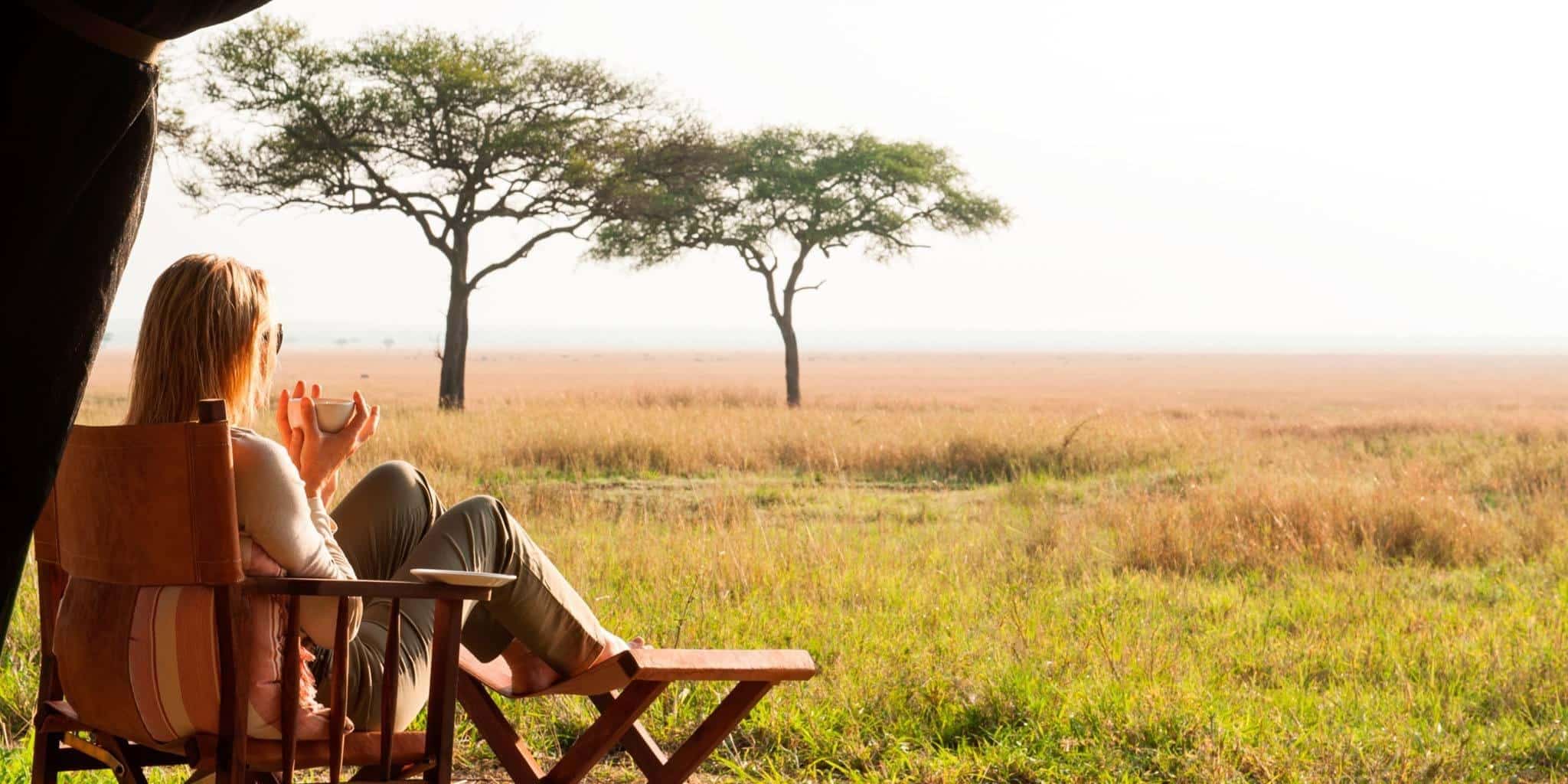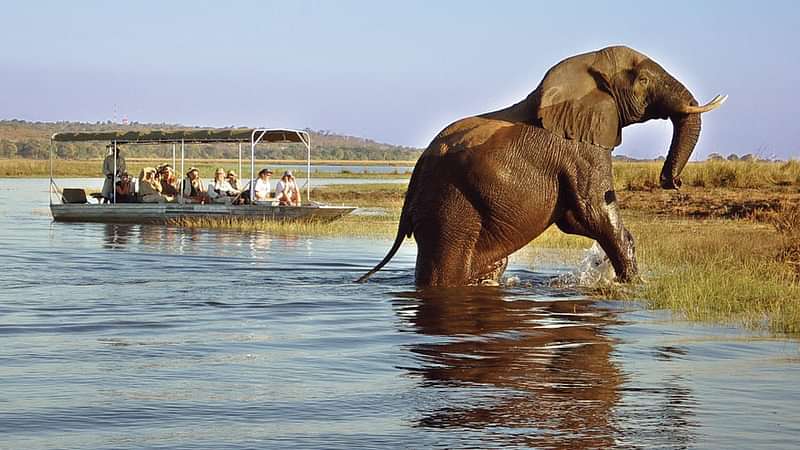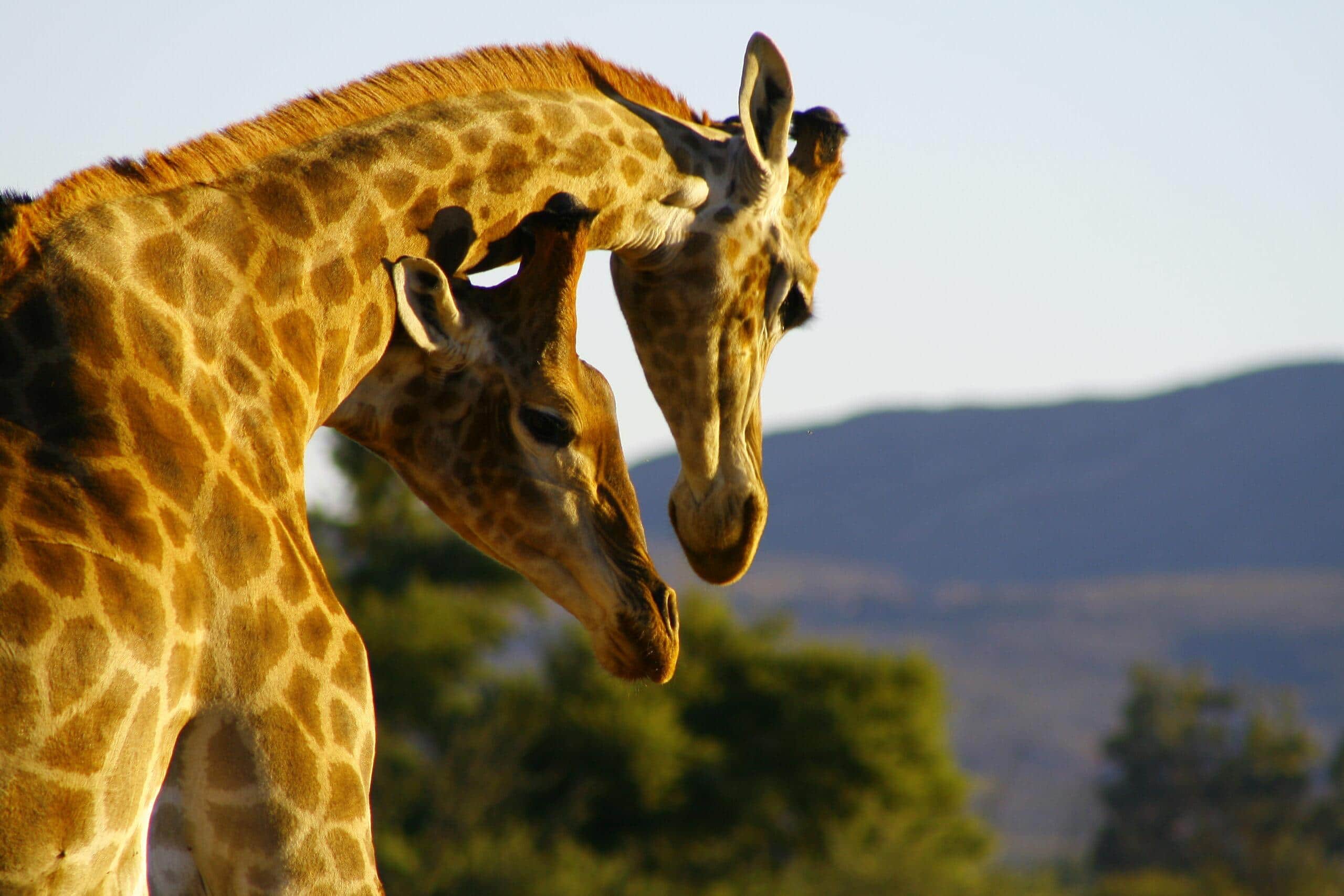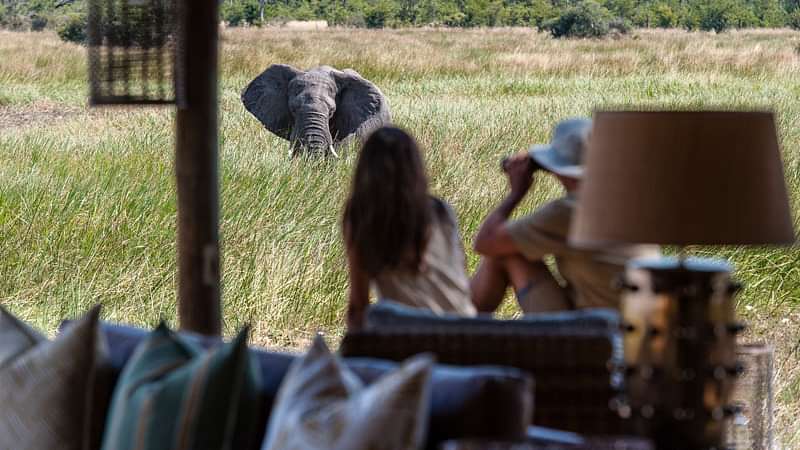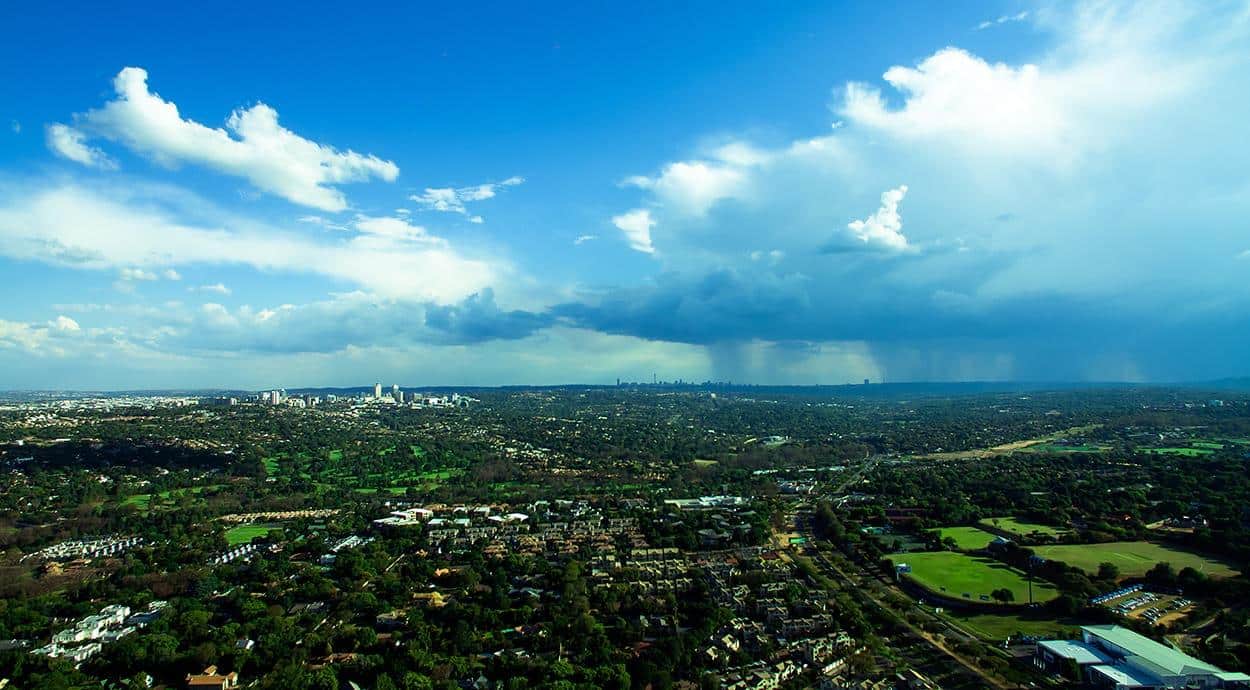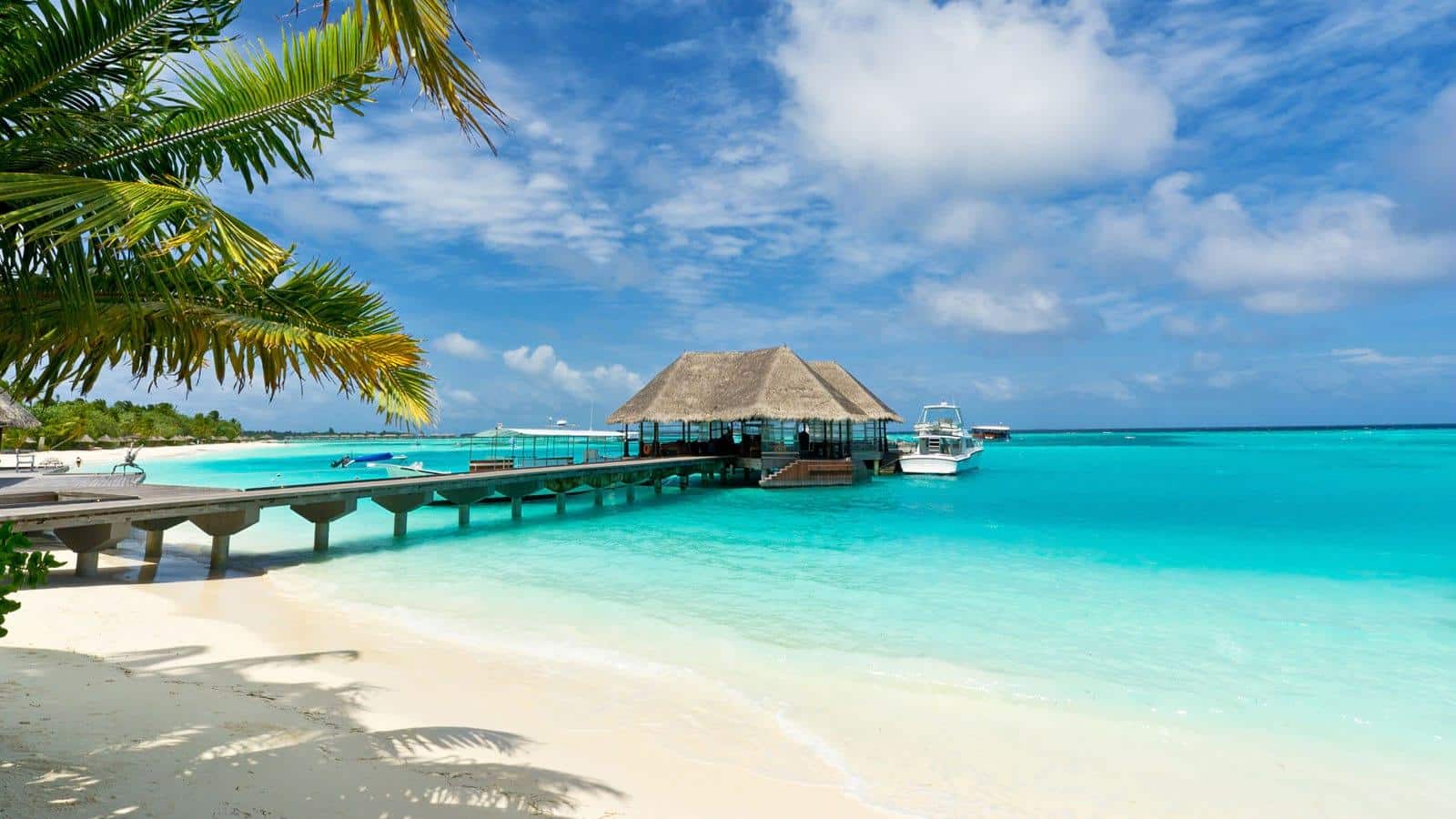Lake Nakuru National Park
Introduction
The beautiful Lake Nakuru National Park is situated on the floor of the Great Rift Valley, surrounded by wooded and bushy grassland. Nakuru means “Dust” or “Dusty Place” in the Maasai language.
Visitors to the park can enjoy a wide variety of habitats and ecological diversity that range from Lake Nakuru itself to the surrounding escarpment and picturesque ridges. Lake Nakuru National Park was created in 1961 around Lake Nakuru, near the town of Nakuru and is best known for its thousands, even millions, of flamingos that nest along its shores.
The lake is fairly shallow, and its surface is often almost completely obliterated by a shifting mass of pink – the continually moving flamingos. The abundance of algae in the lake attracts vast numbers of flamingos to gather and feed around the shore.
The number of flamingos on the lake varies as water and food conditions change and a very good vantage point from where to view this phenomenon is from the so-called Baboon Cliff. Although the lake is famous for its flamingos, they are not the only birds present.
Myriads of more bird species frequent and inhabit the lake and the surrounding area. These include African fish eagle, Hamerkop, Goliath heron, pied kingfisher and Verreaux’s eagle among others.
Lake Nakuru National Park stretches over 188 square kilometres or 73 square miles and is ideal not only for bird watching, but more so for game drives, as well as hiking and picnics. Lake Nakuru National Park started off as a very small protected area, only including the famous lake and a part of the surrounding mountainous neighbourhood, but now also include a large part of the savannahs.
The park has recently been enlarged partly in an effort to provide a sanctuary for the rhino, including the critically endangered black rhino. An area of 188 km (116 miles) around the lake is fenced off as a sanctuary for the protection of giraffes as well as both black and white rhino. This fence was necessitated not to restrict the movement of wildlife, but to keep out poachers.
The park stretches for more than 10 kilometres along the south eastern boundary with the Soysambu conservancy which in turn may be a possible future expansion of habitat for the rhinos and is currently the only remaining wildlife corridor to Lake Naivasha.
Ten years ago the park already had more than 25 eastern black rhinoceros, which was one of the largest concentrations in the country, as well as more than 70 southern white rhinos. The park is home to a number of Rothschild’s giraffe, which were relocated from western Kenya since 1977 for their own safety. Both the Kenyan subspecies of waterbuck are commonly found in the area too, as are warthogs, baboons and other large mammals.
The park also houses a number of predators like lion, cheetah and leopard, the latter seemingly increasing in numbers over recent times too. In the dense woodlands of the park some large sized pythons can be found and are often seen while they are crossing the roads or are dangling from trees.
The lake’s level had dropped dramatically in the early 1990s but has since largely recovered, so much even that in 2013, it had experienced such an alarming increase in its water level that it led to a mass migration of flamingos to north to Lake Bogoria in search for food.
Lake Nakuru itself is protected under the Ramsar Convention on wetlands.
A bit of history
Lake Nakuru National Park started off as a small bird viewing and sport shooting area of migratory birds in the 1950s but has since been expanded and fenced in to protect populations of endangered giraffes and rhinoceros.
Although there are many prehistoric sites located in the vicinity, not much is known about the earlier settlement patterns in the catchment basin prior to 1889. Periodically, over tens of thousands of years, the area had been an important centre for human populations and some written records by European travellers that visited the area at the turn of the century, provide descriptions of teeming wildlife in large uninhabited landscapes.
Local traditions have it that the area was often occupied by moving pastoral groups that utilised the valley grasslands and forest glades for wet season grazing and cultivation, as is done up to today in some areas of the catchment basin.
Since the Kenya-Uganda Railway reached Nakuru in 1889, people started to settle permanently in the catchment area. During the colonial era, land in the area was mainly owned by farming and ranching European settlers, who started to fence of their properties and shoot of “vermin” to protect crops and livestock.
Even hardwood forest areas were destroyed by timber merchants that secured large concessions in forests in the upper reaches of the catchment and expanded their trade with to such an extent that the colonial government had to counter it by establishing plantations where the land was laid bare by clear felling.
The town of Nakuru was founded in 1904 close to the lake to service the agricultural neighbourhood on both sides of the railway line. The town quickly grew to become a district headquarters and the agricultural capital of the “White Highlands”. Farming practices led to loss of habitat, interfered with the migratory routes of animals and uncontrolled hunting further lead to the decimation and dispersal of endemic wildlife.
With independence in 1963 a second drive of settlement followed by indigenous, small-scale farmers, which led to more extensive land use. Settlement initially took place on existing mixed farms bought from European owners. As the number of these settlements increased over the next decade, more encroachment into the forest reserves took place.
More than 400 square kilometres of forest and areas of natural vegetation have succumbed to subsistence agriculture between 1967 and 1986, before an influx of new settlers was finally halted, leaving only 26 per cent of the original 47 per cent of the catchment are under forest and natural vegetative.
The type of farming also depleted available resources for improving soil fertility and the curtailing of erosion. These and other factors led to a progressive decline in environmental quality and yield of crops over the following years.
In 1957 the park was declared a conservation area and by 1961 two thirds of the southern parts were designated as a bird sanctuary. Three years later, in 1964, the bird sanctuary was extended again, then covering the whole lake and a small ribbon of land around it.
The area was gazetted as Lake Nakuru National Park in 1968.
During 1977 some Rothschild Giraffes were translocated from western Kenya to the park for their protection and that was followed in 1984 with the establishment of the park as a first government managed rhino sanctuary.
Two years later, in 1986, the chain link fence around the park was replaced by an electric fence and in the following year the whole park was declared a rhino sanctuary.
The lake itself was designated as a Ramsar site in 1990, meaning that it became a wetland site of international importance under the Ramsar Convention, an intergovernmental environmental treaty established in 1971 by UNESCO and which came into force in 1975.
In 2009 the park was also designated as an Important Bird and Biodiversity Area (IBA), identified using an internationally agreed set of criteria as being globally important for the conservation of bird populations with about 450 identified bird species.
In 2011 the lake was designated by the United Nations Educational, Scientific and Cultural Organization (UNESCO) as one of the Kenya Lakes System World Heritage Sites, together with lakes Elementaita, and Bogoria.
Current administration
Lake Nakuru National Park is administrated by the Kenia Wildlife Service (KWS), who conserves and manages Kenya’s wildlife for the Kenyan people and the world.
It is a state corporation established with the mandate to conserve and manage wildlife in Kenya, and to enforce related laws and regulations in these areas. KWS manages conservation and wildlife resources across all protected areas systems in collaboration with other stakeholders.
The community wildlife programmes of KWS in collaboration with others encourages biodiversity conservation by communities living on land essential to wildlife, such as wildlife corridors and dispersal lands outside parks and reserves.
KWS manages about 8 per cent of the total landmass of the country. The country has 22 National Parks, 28 National Reserves and 5 National Sanctuaries.
Location and how to get there
Where is the park located?
Lake Nakuru National Park is located in Central Kenya, about 140 km (90 miles) northwest of Nairobi, in the Nakuru district of the Rift Valley Province. It can easily be visited in a day tour from the capital or more likely as part of a circuit taking in the Maasai Mara or Lake Baringo.
Lake Nakuru is one of the Rift Valley soda lakes at an elevation of 1 754 m (5 755 ft) above sea level. The ecosystem comprises the lake and surrounding bushy and wooded grasslands. The park supports a wide ecological diversity with greater and lesser flamingos and other water birds, and the endangered black and white rhinoceros as major attractions.
How to get to the Park
Travelling by road
The park is situated north west of Nairobi and reachable from the city via a tarred road connection – a distance of 156 km on the main A104 road. The route most commonly used into the park is via the main gate, which is about four km from the Nakuru town centre.
The park can also be entered at the Lanet Gate from the main road between Nairobi and Nakuru. People accessing the park from Maasai Mara or Elementaita will use the Nderit Gate.
The park gates open at 07:00. If you decide to travel from Nairobi on the Nairobi-Nakuru highway, you will have a great view of the Rift Valley. From Nairobi, it is about a 30 minute drive to a scenic lookout point at 2 200 meters (7 200 feet) above sea level from where you can get a spectacular view of the volcanoes Suswa and Longonot.
At this stop you will also find a collection of curio shops where you can buy souvenirs. Since it will take you a full day to really see and experience the entire park, you should leave early enough to enter around 09:00 unless you have another day to spend in the area.
Travelling by air
Many visitor choose to fly in from the Jomo Kenyatta International Airport in Nairobi. This is a flight of about 25 minutes to the Naishi airstrip that is located inside the park.
The Naishi airstrip services the park for tourism as well as Kenia Wildlife Services’ activities.
Inside the park
The park has very well established roads and most parts of it are accessible by 2-wheel-drive vehicles. Only some of the less-travelled areas and most hills with viewpoints may require 4-wheel-drive.
Geography
Lake Nakuru itself can cover up to about 40 square kilometres (25 square miles), depending on the season, with the entire park covering about 188 square kilometres (116 square miles).
The Mau Escarpment, the Bahati Escarpment, the Rift Valley floor, Menengai crater and Lake Nakuru with its drainage system, Lake Elementeita and the Eburu Hills are the main topographic features of the area.
The geology of the catchment is recognised by features and activities that are associated with the Rift Valley formation and is characterised by volcanic eruptions, faulting, and more. The rocks are grouped into lava flows and consisting of fragments of rock. Soil in the catchment are highly porous and thus susceptible to erosion.
The lake is very saline therefore it is surrounded by a grassland of highly adaptable alkaline grasses. Throughout the park also are many hills with established viewpoints from which the whole area with the lake, the woodlands, and often large herds of buffalo can be seen.
The vegetation comprises scrublands and grasslands at the lower parts of the basin with yellow acacia along the lakeshore and flood plains. Along the river courses one find riverine vegetation, and in the areas where rainfall is high forests are common. Most of the rivers originate from these areas.
Three major rivers flow into Lake Nakuru – the Njoro, Makalia and Nderit. Other minor streams come from the Bahati escarpment and drain into Lake Solai. In the larger ecotourism area, the Kariandusi and Mbaruk rivers drain into Lake Elementeita and some warm springs to the south supplement the flow form the rivers.
Weather and climate
Lake Nakuru National Park is officially classified as dry, sub-humid to semi-arid, which means that it is neither too wet nor too dry, or too hot or cold.
The area is known for a very pleasant climate, much more comfortable than in Amboseli or Tsavo. Rain is however always to be expected, usually during late afternoons. If a visitor really want to avoid rain as far as possible, the person should consider a visit somewhere during the dryer months between July and December or between January and March, although even then it cannot be guaranteed that it would not rain.
It follows naturally then that these months form the peak tourism season in the park, so it will usually be quite crowded by tourist vehicles. Hence, if getting soaked from time to time is not an issue, but crowds are, a visit in December or between April and June may be a good option. As a bonus, you may also save costs on accommodation and transport during the low season.
Since this park, different from some of the other in the country, is fenced, you will see wildlife even during the wet months because they cannot migrate away from the park.
Wildlife
The lake is world-famous as the location of one of the greatest bird spectacles on earth – millions of fuchsia pink flamingos that feed on the abundant algae which thrives in the warm waters on the shores of Lake Nakuru.
Scientists have calculated and suggest that the population of flamingos at Nakuru can consume about 250 000 kg of algae per hectare of surface area annually. Usually, the lake recedes during the dry season and floods during the wet season.
There are two types of flamingo species: the lesser flamingo and the greater flamingo. The lesser flamingo is distinguished by its deep carmine red bill and pink plumage while the greater flamingo’s bill has a black tip. The lesser flamingos are larger in numbers.
The number of flamingos had been decreasing recently, possibly because of the rise in tourism and pollution by nearby industries that dump waste into the waters, or some other unknown reason that brings changes in the water quality. The flamingos feed on algae created from their droppings and plankton mixing in the warm alkaline waters.
Large variations between the dry and wet seasons’ water levels have been occurring lately, possibly caused by increasing land conversion to intensive crop production and urbanization reducing the soil’s capacity to absorb water and recharge ground water.
Factors like pollution and drought destroy the flamingos’ food, the blue-green algae, and cause them to migrate to other nearby Lakes like lakes Elmenteita, Simbi Nyaima and Bogoria.
Their decrease in numbers causes concern among stakeholders, since such a mass flamingo migration away from Lake Nakuru, coupled with more deaths, spell doom to the thriving tourism industry.
Fortunately the flamingos are not the only avian attraction, but two other large fish predating birds, pelicans and cormorants, are also found there and the lake is rich in other bird life too. There are more than 400 resident species on the lake and in the surrounding park. Thousands of little grebes and white winged black terns are frequently spotted, as well as stilts, avocets, ducks, and in the European winter some of the migrant waders.
Despite the lukewarm and alkaline waters, a small fish, Alcolapia grahami has also flourished in the lake after being introduced in the early 1960s.
In addition to its hundreds of species of birds, Lake Nakuru National Park is home to more than 50 mammal species, as well as over 500 species of flora.
However, because Lake Nakuru National Park was fenced to protect the endangered rhinos and giraffes, it can’t support African elephants, so they are not found in here.
A visitor is more or less guaranteed to see white rhinos, African buffalos, Rothschild giraffes, zebras, impalas, olive baboons, vervet monkeys, waterbucks, a variety of water birds like yellow-billed pelicans, marabou storks, hamerkops, fish eagles, and more.
Hyenas, jackals, hippopotamus and pythons are common in the park and if you are lucky, you will also see lions, leopards, wild dogs, Colobus monkeys and cheetahs.
Lake Nakuru National Park is further home to a wide variety of beautiful landscapes ranging from grasslands to dense forests, with euphorbia forests and the very rare Tarchonanthus bushlands.
Conservation and research
The first recorded conservation efforts in the catchment basin of Lake Nakuru date back to the 1930s, when the colonial government employed measures for reforestation and soil conservation in the area.
Many of those soil conservation structures on farms however didn’t survive after independence, as compulsive methods didn’t achieve the desired conservation aims. Efforts by game rangers in Nakuru to protect the endangered Nakuru hartebeest in the 1950s also were not successful and in 1958, the last of this species died.
The protectionist strategy of establishing national parks “for cultural, scientific and recreational purposes” was extended to Lake Nakuru in 1961, when a part of the lake was gazetted as a bird sanctuary and in 1968, the national government increased the area under protection to include the entire lake. This effort was enhanced in 1974, when a buffer zone was added to the park, bringing it to its present dimensions of 188 square kilometres.
The main issues confronting Lake Nakuru now are the threats to its water balance and quality due to human activity in the catchment basin. Lately signs of environmental stress have become evident in prolonged dry outs, toxic contamination of the lake’s water and bottom sediments, and unexplained deaths among wildlife.
This also poses serious threats to the well-being of human populations living in the area so it is hoped that some improvements in soil management practices, reduced use of agro-chemicals, and better handling and disposing of urban and industrial waste would successfully curb the degradation.
Apart from tourism, which generates significant resources for the park, Lake Nakuru National Park does not lend it to any other form of direct utilisation by residents.
For both the animals and humans that are dependent on the wellness of the lake, it becomes more and more important to tackle environmental issues with the prevailing economic and social problems in mind.
Tourism
Efforts are ongoing to responsibly exploit the eco-tourism potentials within Lake Nakuru National Park and its catchment while promoting environmental conservation and socio-economic development.
Any such efforts strive to involve community participation for further poverty alleviation since the area is of great importance both nationally and internationally because of its tremendous potential for eco-tourism development.
The Park receives more than 200 000 visitors per year, most of whom on average stay for not longer than two nights, this while Lake Nakuru offers easy wildlife viewing of most of the big safari animals, with the exception of elephants.
Lake Nakuru National Park is one of Kenya’s two premium parks and is a bird lover’s paradise. It surrounds Lake Nakuru, located in the Central Rift Conservation Area in the Southern Rift Valley region of Kenya and had its origin due to its birdlife.
Originally protected as a bird sanctuary, the park hosts more than 400 bird species, including no less than five globally threatened species. The park is an important stop for migratory birds on the so-called African-Eurasian Migratory Flyway.
For more birdwatching, visitors can also visit other Ramsar sites like the Lakes Naivasha, Bogoria, Baringo, and Elementaita in the area.
This park was also the first national rhino sanctuary and hosts one of the world’s highest concentrations of the black rhinoceros. Since black and white rhino were re-introduced in the 1990s, they have bred to healthy populations and can often be seen on the lakeshore. Rothschild giraffe, buffalo and hippo are numerous, and visitors might be lucky enough to see lions, which are said to even climb trees occasionally!
Leopard are present too, but not very often encountered, possible due to the fact that they prefer to hunt at night and maintain a low profile during the day.
The scenery of Lake Nakuru National Park does not have to stand back for any of the other parks in this region. On the contrary, it is more than breath taking. Few visitors will ever forget views of The Rift Valley escarpment, aesthetically dotted with euphorbia trees, that rises up from the lakeshore.
One of the unique attractions of the park is the heavy mist that often shrouds the lake and surrounding yellow fever trees in the early mornings. Instead of obscuring the views, this actually adds to the atmosphere of the environment.
Inside the park many hills offer fine viewpoints. These include the view from Baboon Cliff,
Enasoit, Honeymoon Hill, Lion hill ridge and more, while the Makalia waterfalls has its own unique charm. You can leave your vehicle nearby and take a short hike over to the falls.
At some of the viewpoints you can park your vehicle, get out, and enjoy the view, take photos, or even have a picnic on picnic tables provided.
The overall picturesque landscape with its yellow acacia woodlands harbours unique vegetation with about 550 different plant species, including the biggest euphorbia forest in Africa.
Although the park has a few drawbacks, its benefits by far overshadows those. In general it offers good wildlife viewing, is more easily accessible than some other parks, it brings a visitor near the stunning Rift Valley scenery and the varied habitats support an excellent range of wildlife. Add to that some excellent birding with big flocks of pelicans and flamingos, and you have ample reason to add this park to your African itinerary.
On the negative side, you may feel that the park gets too busy during high season due to its smaller size and a limited game-drive circuit.
Apart from game viewing and bird watching, a Cycle with Rhino Event is hosted annually in September and the park is a popular spot for camping, picnicking and nature photography.
Souvenirs can be bought inside the park in lodge gift shops, but you should keep in mind that these gift shops are not cheap. After all, it could be a much more interesting experience to explore the nearby town of Nakuru and do your shopping there. You may find the same products directly from the locals there for much less, while supporting the local economy.
If you are staying outside the park and only visit for a day, you may prefer to rather bring your own food and drinks and enjoy them at one of the scenic picnic spots found the park. If you plan to stay at a lodge in the park, make use of the kind of meal packages offered that include an option of packed lunches for your days of game driving.
The park closes at 18:00, and the last vehicle is let in at 17:15.
The best times to visit the Park according to different activities or sightings
Lake Nakuru offers very good wildlife viewing throughout the year, but the rains of the wettest months, which are April and May, might interfere slightly with game drives.
It should also be noted that although there is still great birdlife at the lake, conditions in recent years have become more unfavourable for flamingos, which used to be the real attraction here because of their numbers. More and more of the flamingos have moved to other lakes in the Rift Valley.
The population of flamingos at the lake varies according to the alkalinity of the lake. With higher levels of precipitation, the alkalinity decrease resulting in less algae for the birds. Then the largest number of flamingos may migrate to other neighbouring soda lakes in Kenya such as Bogoria and Natron for a period of time.
Your best bet is to plan a flamingo-watching tour during the dry-hot season in January and February, but because the majority of the birds feed and nest at the lake that offers the highest quantity of algae, the sightings are never guaranteed.
Still, even with fewer flamingos, Nakuru Park still offers many other types of wildlife that will ensure an exhilarating wilderness visit.
During the long dry season, there are limited fresh water sources available for animals to congregate, which make sightings easier. In the dry season there are also fewer mosquitoes, so you can enjoy a more comfortable trip to Kenya.
The Nakuru region receives a bit more rain than other areas in the country during the cool but dry season from July to October. As temperatures start falling in Europe during October, migratory birds begin their long journey south and start to arrive and remain in this area until April.
The short rains normally start in November and last until December, but the amount of rain is much less than the long rains and has minimal impact on any wildlife safari because the moisture evaporates very quickly in equatorial Kenya.
In January and February, the weather is dry, humid and hot with scattered rains, bringing increased numbers of visitors from the cold winters in Europe and the United States to the park.
The long rainy season starts in late March and lasts through June, with April and May being the months of the most rain. Pools of water form as water sources for the animals (they cannot drink from the soda lake of Nakuru due to the high alkaline levels) and green grasses sprouts. Although animals are more dispersed throughout the park during this time of year, some of them are giving birth, so you may see very young foals and calves galore.
Lake Nakuru National Park enjoys moderate temperatures throughout the year, but often with cool evenings.
Guest numbers and lodging rates do vary over the year. Parents with school going children frequents school breaks, meaning that late summer is the busiest time of year for family safaris. Christmas, New Year’s and Easter are also quite busy.
April and May are considered as low tourist season, with Nakuru room rates reduced but other costs associated with logistics, park fees, meals, activities, guides, hotel taxes and other aspects of your visit stay the same.
Costs and Fees
Once you’ve decided to go on a one-of-a-kind safari that includes Lake Nakuru National Park, the next step would be to determine your budget and consider all of the costs and fees applicable.
Entrance fees
There are different entrance fees for citizens, residents and non-residents. Payment can be made via MPESA, VISA Card, or direct deposits to KWS bank accounts at any gate.
If the fee is paid in Kenyan Shillings (KSH), the fee is converted to US$. For Kenyan nationals the fee is KSH 860 for adults, KSH 215 for child/student; for foreign adult residents of Kenya the fee is KSH 1,030 and one-half KSH 515 for child/student.
KWS has started a new option called SafariCard. You can buy a permanent one ahead of time and load it up with money to use at several of Kenya’s parks, or you can buy a temporary one at the gate, surrendering it again at the gate when you leave.
An additional vehicle fee is required, the amount of which is determined by the number of seats in your vehicle.
Accommodation
KWS offers a variety of visitor accommodation facilities to suite the taste, budget and safari style of each type of visitor. Accommodation range from luxury lodges and tented campsites to private budget campsites operated by individual operators.
KWS Self Catering options in Nakuru National Park includes Naishi Guest House, Campsites include the Makalia, Reedbuck, Naishi, Rhino, Chui, Soysambu, Kambi Nyuki, and Kambi Nyati campsites and privately owned lodges include the Lake Nakuru lodge and Sarova Lion Hill Lodge.
There is also the Nakuru Backpackers Hostel opposite Kamba bus station and the Makalia, Backpackers.
Things to remember when visiting
The duration of your tour
When planning your budget, decide how many nights you want to spend in the park and how many game drives a tour operator includes in your tour.
Food
Meals are generally included in a safari package, so make the operator aware of any dietary restrictions. If you anticipate requiring extra snacks or water, obtain that before you set out on your safari.
Transportation
There are two main options for safari travel within the Maasai Mara National Reserve: safari vans and land cruisers. Safari vans are the more budget-friendly option. The rides will be bumpier and offer limited views since they are usually covered over.
Land cruisers are more traditional open-air vehicles that allow the best visibility and more comfort, but they are of course more expensive.
Tipping
While tipping isn’t compulsory on safari trips, tips are always much appreciated and can make a big difference in the lives of your local guides.
Cash or card
Remember that there will likely be fees and commissions associated with international withdrawals or card payments. Also, while ATMs will be available in major cities, they are few and very far between in remote areas. Many smaller venues might only accept cash.
Currency
The currency in Kenya is the Kenyan Shilling and must not be confused with the Tanzanian or Ugandan Shillings.
US dollars are usually accepted on airlines as well as in major hotels and national parks, but it may be a good idea to obtain some local currency for tips and shopping too. Exchange bureaus are easy to find and generally offer the best rates.
General tips
Don’t harass or feed the animals.
Don’t litter and don’t leave your vehicle.
Never ever drive off of the designated roads – it could land you with a fine or get you removed from the park.
If you see something awesome, pull over to the side of the road, shut off your vehicle, keep quiet and watch. Never try to get closer or coax the animal into coming closer to you.
Never block other people from seeing whatever you are looking at.

